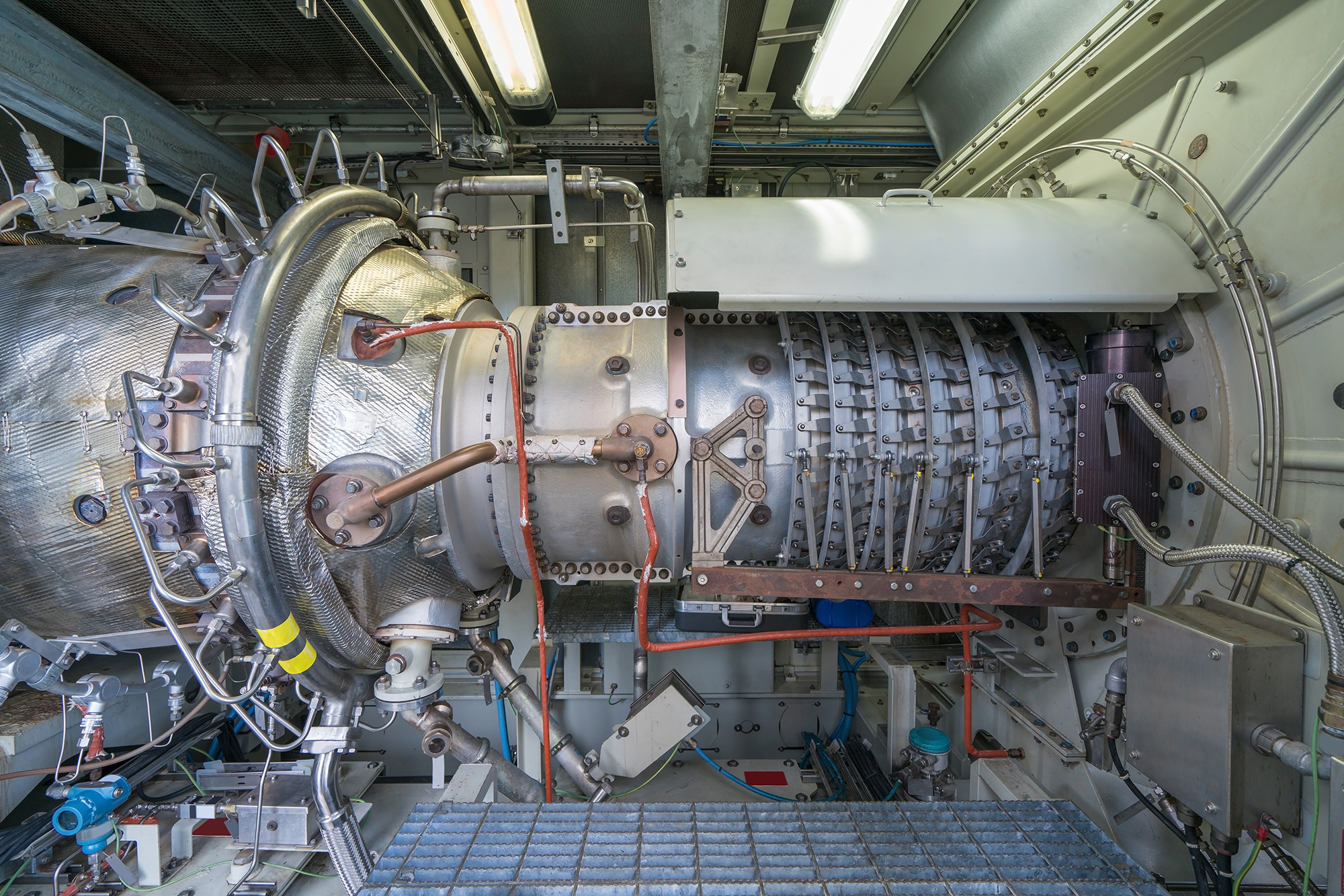The demand for liquefied natural gas (LNG) has been increasing in the U.S. because it is a cleaner-burning fuel compared to other traditional oil-based fuels. Natural gas has many benefits; it emits less carbon dioxide (CO2) when burned, and it can be easily stored, transported and revaporized when ready for use. The design of utility-scale LNG plants has evolved over the years, as upgraded equipment and new technologies have been developed. When building new liquefaction plants, owners have to make several major decisions during the early stages of the project, such as type of liquefaction technology (single mixed refrigeration or nitrogen), type of driver for the main refrigeration compressor (gas turbine or electric motor) and air cooling versus water cooling.
The performance of a plant and process efficiency depend on selecting the proper solutions. To build a robust LNG plant, it is imperative to evaluate the pros and cons of each technology and equipment as well as availability of resources in the surrounding areas. Partnering with professionals who specialize in designing LNG facilities can simplify the decision-making process and help in finding the right solutions.
BY Sara O’Dell, PE, AND Megan Reusser, PE
The demand for liquefied natural gas (LNG) has been increasing in the U.S. because it is a cleaner-burning fuel compared to other traditional oil-based fuels. Natural gas has many benefits; it emits less carbon dioxide (CO2) when burned, and it can be easily stored, transported and revaporized when ready for use. The design of utility-scale LNG plants has evolved over the years, as upgraded equipment and new technologies have been developed. When building new liquefaction plants, owners have to make several major decisions during the early stages of the project, such as type of liquefaction technology (single mixed refrigeration or nitrogen), type of driver for the main refrigeration compressor (gas turbine or electric motor) and air cooling versus water cooling.
LIQUEFACTION TECHNOLOGY SELECTION
The liquefaction/refrigeration technology is a key element for an LNG project, and is often one of the first major decisions that is made as the project begins. Many factors go into selecting the type of liquefaction technology that fits the needs of the project, one of the main ones being the desired liquefaction capacity.
There are many different technologies and solutions available in the market. Some of the most well-known options are the nitrogen cycle, single mixed refrigerant (SMR), propane precooled mixed refrigerant (C3MR) and the optimized cascade process. Each of these technologies offers different benefits. For example, for a small peak-shaver facility producing around 0.05 million tons per annum (MTPA), the use of a nitrogen cycle may be the most beneficial. The nitrogen cycle offers the lowest efficiency of all the options, but it is the least complex and does not require a mix of multiple refrigerants for operation. Conversely, for a large liquefaction capacity, such as a baseload export facility producing 5-8 MTPA per liquefaction train, the C3MR or cascade processes would be a better option. These processes are more complex and require multiple compressors and multiple refrigerants, but they offer much higher operational process efficiency and lower capital costs on the basis of dollars per ton of LNG. At large production rates, efficiency becomes a major factor in minimizing operating expenses.
Other things that must be considered during the technology selection process are reliability, site-specific requirements and environmental considerations. A detailed evaluation of all the options can help in selecting the ideal configuration.
REFRIGERATION COMPRESSOR DRIVER SELECTION
The refrigeration compressor in the liquefaction process is a crucial element in the operation of an LNG facility. The selection of the driver for this compressor has a drastic impact on the plant’s performance, maintenance, emissions and capital cost.
Either a gas turbine driver or an electric motor is installed to provide the power required to drive the main refrigerant compressor in the liquefaction unit. There are a variety of factors to consider when choosing between the two.
GAS TURBINE DRIVERS
Gas turbine drivers offer a lot of advantages over a traditional electric motor. For example, the use of a gas turbine eliminates the need for access to high-voltage power to operate the facility. This can be beneficial in remote locations where power supply may not be sufficient or may not be available at all. On a similar note, the operating costs associated with a gas turbine-driven facility may look more favorable when the plant owner also owns the gas supply, meaning that the cost for the fuel gas for the turbine can be negligible in comparison to paying for electrical power from the grid.
From a technical standpoint, gas turbines can offer better turndown capabilities (i.e., better efficiency across the spectrum of operating conditions). This is especially beneficial if the facility is expected to operate over a wide range of capacities. Another consideration is the expected ambient air temperature; cooler temperatures would produce more power and could provide additional capacity during winters.

Although gas turbine drivers offer a wide range of benefits, there are several considerations that could be drawbacks for a specific application, including cost. Gas turbine drivers are typically more expensive than electric motors. Therefore, the results of a cost-benefit analysis regarding the use of a gas turbine driver typically become more favorable for large-scale facilities where the economies of scale become advantageous. Additionally, gas turbine drivers have environmental and permitting aspects that must be considered before selecting this for a specific project.
ELECTRIC MOTOR
Unlike a gas turbine, an electric motor requires a connection to the electrical grid. However, if good access to high-voltage power is available, and especially if the liquefaction facility is owned by the power utility that supplies the energy, it may be more beneficial to utilize an electric motor. Some of the benefits of electric motors are that they typically have less downtime, lower maintenance costs and produce less noise. Electric motors do not generate any emissions associated with operation. Additionally, as previously mentioned, electric motors are often less expensive than gas turbine drivers. Therefore, the use of an electric motor may be more beneficial on small-scale applications where the cost of a gas turbine might make the project nonviable.
HEAT EXCHANGER SELECTION
Another major decision when developing an LNG facility is the type of process cooling that will be used to remove the heat of compression from the refrigeration cycle. The two main types of process cooling that are typically used are air-cooled or water-cooled heat exchangers. Similar to the choice between a gas turbine driver and an electric motor, there are pros and cons with each option.

AIR-COOLED
In general, the use of air-cooled heat exchangers for process cooling is the simplest option. Air-cooled heat exchangers do not require any additional infrastructure — such as a cooling tower, water treatment or water circulation pumps — to operate. However, air coolers are typically less efficient as they do not achieve the same temperature approaches as water-cooled exchangers. This means that the refrigerant does not get as cold and will therefore require additional power to compress it.
Air coolers generally tend to require a larger plot space — this is due to the physical size of the exchangers, as well as space considerations to see that the coolers do not experience any hot-air recirculation. Each air cooler will have multiple fans, each of which requires routine maintenance for reliable operation, along with inspections and maintenance on the motors, belts, louvers and more.
Even with these considerations, the use of air coolers may be advantageous for a small-scale facility because of their lower capital cost and reduced complexity. Additionally, the use of air coolers may simplify the permitting process because there are no emissions associated with them.
WATER-COOLED
One of the main benefits of using water-cooled exchangers is that they can achieve tighter temperature approaches than air-cooled heat exchangers, resulting in cooler process temperatures. Cooler process temperatures are beneficial to the refrigeration cycle because the cooler the refrigerant, the less power required to compress it. Less demand for compression power can result in lower operating costs or potentially a smaller compressor, which would reduce the capital costs while increasing the overall efficiency. Additionally, water-cooled heat exchangers are more compact than their air-cooled counterparts, therefore potentially reducing the footprint required for the facility.
One of the major limitations of using a water-cooled system is access to water. Typically, water-cooled processing facilities use a traditional cooling tower to cool the water for circulation. Cooling towers use evaporation to eject the waste heat into the atmosphere, resulting in large water losses that must continually be made up. If there is no access to water on the site, the use of a cooling tower might not be feasible. A cooling tower often adds cost and complexity to the project once you factor in the initial capital cost, compliance with permits and ongoing water treatment.
For climates that experience ambient temperatures below freezing, any of the water systems will require freeze protection to see that the water does not solidify and damage the piping, instruments or other equipment. While these freeze protection systems are not high-cost items, they do increase complexity and add a system that needs to be maintained and inspected regularly.
CONCLUSION
With demand for reliable and safe energy expected to grow, LNG is increasingly becoming a part of utilities’ generation portfolios. As these new projects are being developed, it is imperative that plant owners partner with process engineering specialists who understand the nuances and impacts of the technology and machinery selection on their projects. The three equipment selection decisions discussed here are only a few of the major design decisions that must be made when developing an LNG facility. Selection of the liquefaction technology, compressor driver and heat exchanger are crucial to see that the objectives of the project are being met successfully. These choices are interrelated and directly impact the plant’s function and productivity. All of these pieces should be evaluated on a project-by-project basis to determine the optimal design for the facility.
✖
READ White Paper
✖
Send Us a Note
PROJECT STATS
Client
Confidential Client
Location
Southeastern U.S.
CHALLENGE
A confidential client, serving more than 700,000 customers in southeastern U.S., was in search of a solar solution to add to its traditional power generation. After deciding on a location, significant design challenges surfaced: corrosion issues due to the proximity to the Gulf of Mexico and the need for the design to accommodate the area’s hurricaneforce winds and flood plain location.
The client turned to our team for engineer, procure and construction services (EPC) to overcome these challenges and deliver a 23-megawatt direct current (MWdc), 106-acre solar photovoltaic (PV) field — its first utility-scale solar project.
23
MEGAWATT DIRECT CURRENT (MWDC)106
ACRE SOLAR FIELD202K
PV MODULES20%
ENERGY GAIN VERSUS FIXED SOLAR PANELS






